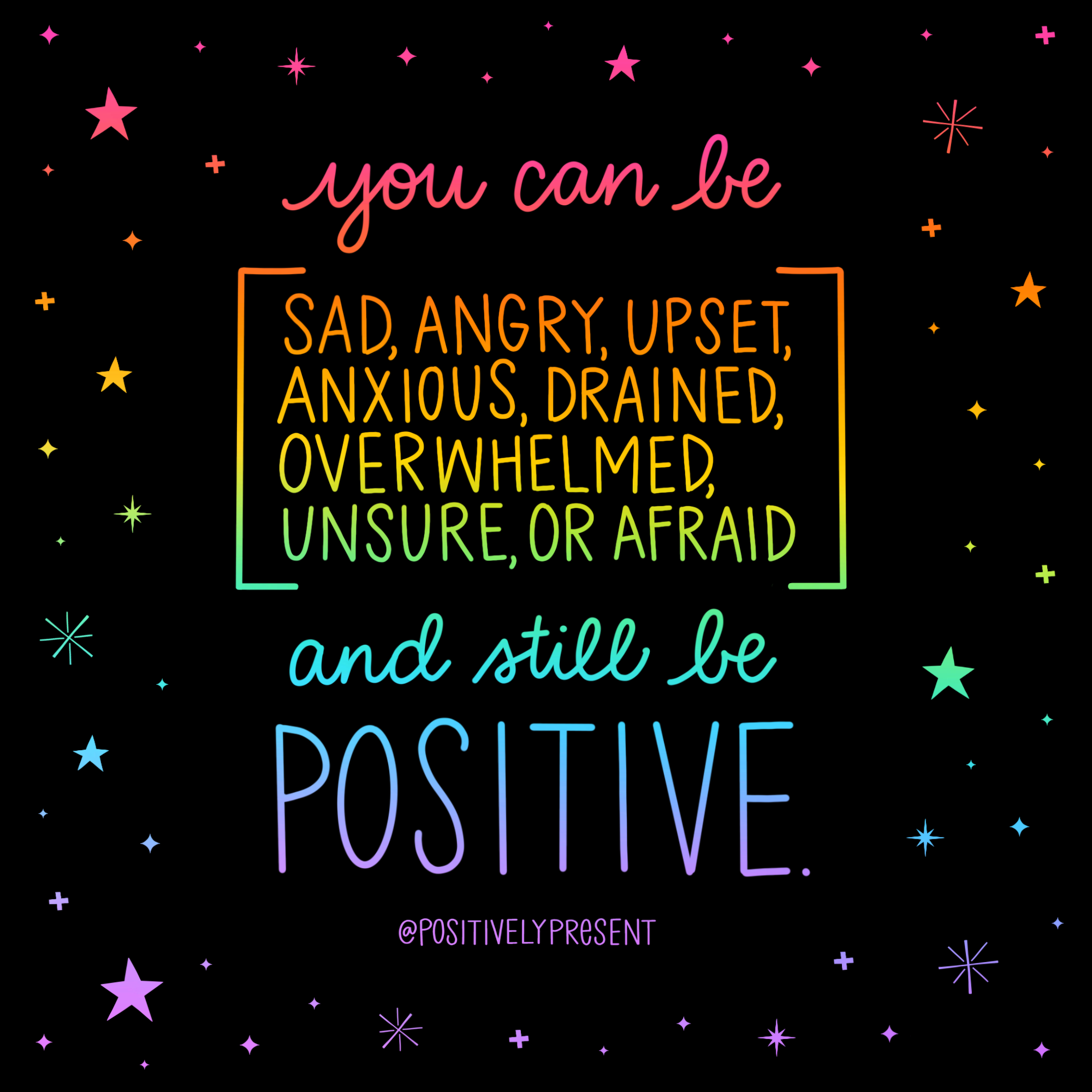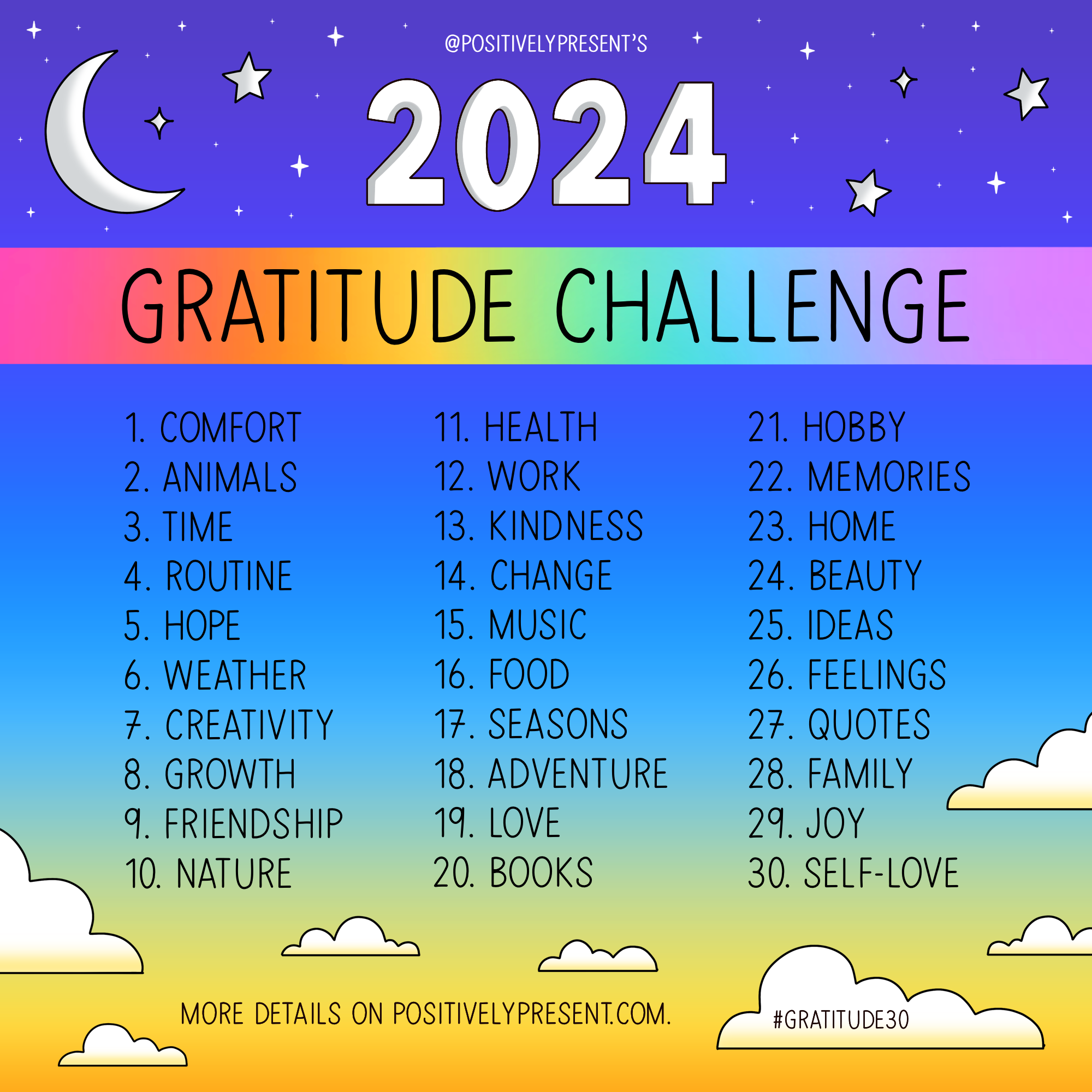As I’ve seen tremendous growth on Instagram over the past few years (which I’m certainly not complaining about!), I’ve also seen a rise in angry, unkind, and negative comments. This is to be expected, but when you’ve been doing this for a decade and are only now facing resistance, it’s admittedly a bit of an odd feeling. It’s new. And it’s not great.
Coupled with this strange, new feeling is the notion that, because my brand is all about being positive (a word that clearly has a variety of meanings for people, which we’ll get into in a bit), I’m expected to behave in a certain way. Anything response I give that’s not 100% cheerful, positive, uplifting, or agreeable is almost always followed by some version of, “well, that’s not very positive of you!”
The more I receive that kind of response, the more I realize people don’t fully understand what I mean when I’m talking about positivity. And more and more, I’m receiving comments not only about my responses not being positive, but also about my content promoting what’s known as “toxic positivity.”
Last week, I posted the image seen above on Instagram, and received a surprising number of comments related to toxic positivity, such as…
“You seem like one of those people who tell people with actual depression, anxiety, insomnia, and other mental health issues that they should just think differently and it will go away.”
“I’m really happy for you if a positive mindset brings you further in life, but don’t erase the voice of those who don’t follow your path.”
“Positive thoughts backed by negative emotions is just negativity with a bow on it.”
“Positivity can be toxic. If you are hoping for the best, you will be let down when the worst happens.”
“Positivity doesn’t work because it doesn’t deal with the actual problem.”
If you haven’t heard of toxic positivity before, it’s the idea that suggesting people be only positive, happy, and cheerful causes more harm than good. I agree with that. That’s why you’ll never see me post “good vibes only” or “if you want to be happy, be.” Happiness isn’t my goal in life — and it shouldn’t be yours either. Happiness is great, but it’s an emotion and, depending on your genetic makeup and your current situation, it might impossible to achieve. Positivity, on the other hand is a mindset, and one that can be chosen at almost any time. I’ve written about the differences between happiness and positivity before in “Happiness vs. Positivity: What’s the Difference?” but I thought I’d take some time this week to address my understanding positivity in relation to the concept of toxic positivity.
- Toxic positivity is referring to happiness (it should really be called “toxic happiness”); positivity and happiness are very different. As discussed in detail in the article referenced above, there’s a big difference between happiness and positivity. Happiness is an emotion. Positivity is a mindset. Chasing happiness can be problematic (and often leads to unhappiness because, great as happiness is, it’s a temporary emotional state and does not last). Pursuing positivity is not problematic because it is a mindset, not an emotion, and it can typically be accessed no matter what your emotional state might be. You cannot always be happy. You can almost always be positive.
- Toxic positivity encourages ignoring negative emotions, but true positivity is not about avoiding, glossing over, or repressing emotions (positive or negative). A positive mindset is about accepting all emotions and doing whatever possible to work through them, understand them, and garner more self-awareness. I, personally, am often very unhappy, anxious, stressed, etc., but I do my best to take what I’ve learned over the past decade of working on being more optimistic to stay positive. The words “be positive!” don’t mean avoid bad feelings. It means do what you can with what you have to make the best of the situation (or at least don’t make it worse).
- Toxic positivity presents itself as something anyone can do at any time, but positivity is a mindset that doesn’t often come easily and must be worked at for most people. Though it is certainly very difficult at times, choosing a positive perspective is possible most of the time for most people. Happiness, however, is not accessible just because you want it. If something horrible has happened to you, you can’t just be happy. You can, more often than not, be positive. Certainly there are situations (such as extreme depressive states or in the midst of a panic attack) when optimism does not feel like an option (it can be so difficult at times or the brain might be wired in such a way that it feels impossible), but, more often than not, positivity is possible in a way that happiness might not be. However, it does take work and practice to know how to find optimistic outlooks in difficult times. For a lot of people (and especially for me!), a positive mindset doesn’t come easily and it requires a lot of work to develop it.
- Toxic positivity embraces a fake-it-till-you-make-it attitude, but positivity isn’t about putting on a fake smile or feigning cheer. Smiling, acting cheerful, etc. are all about the emotion of happiness. Pretending you are feeling good when you’re miserable is not what positivity is about. It’s important to remember that you can work on positivity; it’s a skill. Happiness is an emotion. Yes, sometimes you can find ways to access it (like doing things or being around people who make you feel happier), but you can’t force it. You can present outwardly that you’re happy, but deep down, you can’t make yourself happy if you’re not. You can, with practice and the right mental toolkit, find ways to be optimistic. Which leads me to the last (and perhaps most important point)…
- Toxic positivity aims for good vibes at all times; positivity won’t necessarily make you happy. If you are going through a difficult time, if you are dealing with depression, if you have intense anxiety and it’s been triggered, being positive isn’t going to make you happy. The thing about positivity is: it doesn’t necessarily make things better; it just doesn’t make them worse. Positivity is not the same as happiness and it will not necessarily make you happy. Positivity isn’t a cure for your emotional state; it’s a mindset to adopt when life is difficult (and also when it’s great). It will not change the world around you; it will only impact the way you see it.
Toxic positivity should actually be called toxic happiness because the “just be happy!” attitude has nothing to do with maintaining an optimistic outlook. Positivity is about assessing the situation, understanding your feelings, looking to see if there’s anything you can do to make the situation better, and, if there’s not, doing what you can do make the most of whatever the situation is. It’s not about pretending. And it’s definitely not about happiness.
When people come by this page or follow me on Instagram, they see the bright colors and the cute illustrations and assume that I’m a happy, cheerful, life-loving person without a care in the world. The truth is: I’m just a normal person. I’m someone who has had anxiety my entire life. I’ve been depressed (not just sad, but actually depressed). I’ve had some really bad things happen to me. For the past decade, I’ve been working on living more positively in the present, and I still have highs and lows just like everyone else. I’m happy sometimes, sure, but I certainly wouldn’t classify that as one of my top emotional states. And, as long as I can keep being positive and doing my best to live in the present, I’m okay with that.
A Note about Optimism on Instagram
Writing the article above got me thinking about how my content is perceived on Instagram, so here are a few thoughts on that…
I spend a lot of time creating my posts for Instagram. This isn’t just me doodling for a bit and then posting. When creating the post referenced above, I thought very carefully about the words I chose to use. I specifically did not use “depressed,” for example, because, while it is possible to be depressed and positive, it is often so challenging that it feels impossible. Likewise, I chose the word “can” because it means that it’s an option. If you’re sad, you can be positive, but you don’t have to be. Also, the notion that you can be two things at once is the core message of that illustration. Our emotional states are often very complex, and we should allow ourselves the freedom to feel multiple things at the same time.
When I’m creating something that’s based entirely on my own ideas (not a quote someone else said), a great deal of time goes into really thinking about whether the words I’m writing are true. I’m incredibly analytical by nature, so when I’ve posted something (especially on Instagram), I’ve typically spent a lot of time reflecting on how it might be perceived. I do my best to look at it from a number of points of view and assess if it might be misconstrued or misunderstood. It might just look like cute little drawings to the average viewer, but a lot of thought goes into the words and images I choose.
That being said, I’m also creating things that I need to see, writing words that speak to what I’m struggling with in that moment. Though the Positively Present brand has grown over the years, is still me, Dani, trying my best to cope with my own negative, anxious, and melancholic mind. What is true for me might not be true for everyone else. I’m not a doctor, a therapist, or a guru. I’m not psychologist, authority figure, or philosopher. I’m a creator, sharing my experiences with the world.
So, whether it’s something on my Instagram account or something you’ve seen elsewhere online, I’d urge you think critically and with an open mind before making judgments or remarks about the content. What you see might not speak to you, but it might be true and useful for someone else (and, in the example of this particular post, I know it resonated with a lot of people). When it comes to the content you see on my page or pages like mind, keep an open mind. Take what works for you, and understand that not everything will. And know that, at least in my case, I’ve spent a lot of time thinking about what I post. It might look pretty and light-hearted, but behind every post there’s a lot of time spent thinking, analyzing, and carefully choosing words that I hope will help people (and me!) get better at living more positively in the present — regardless of whether or not we’re currently happy.


